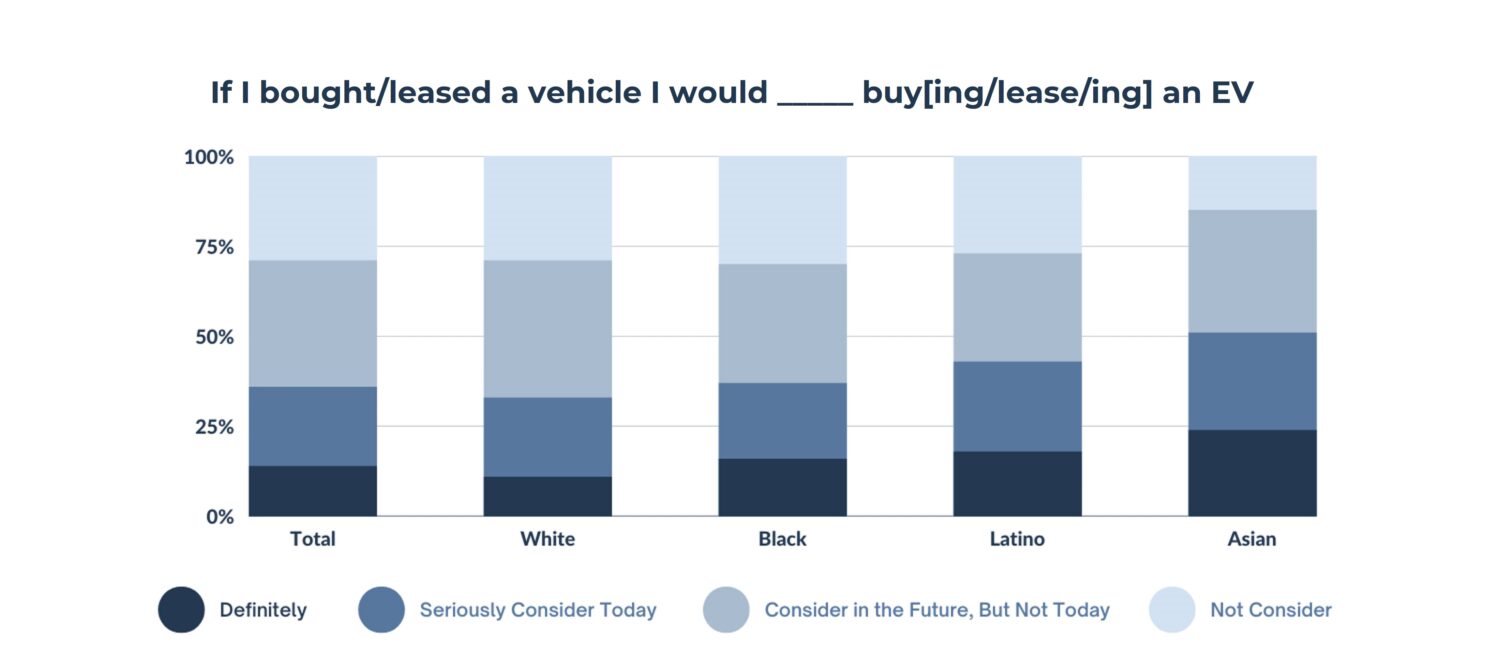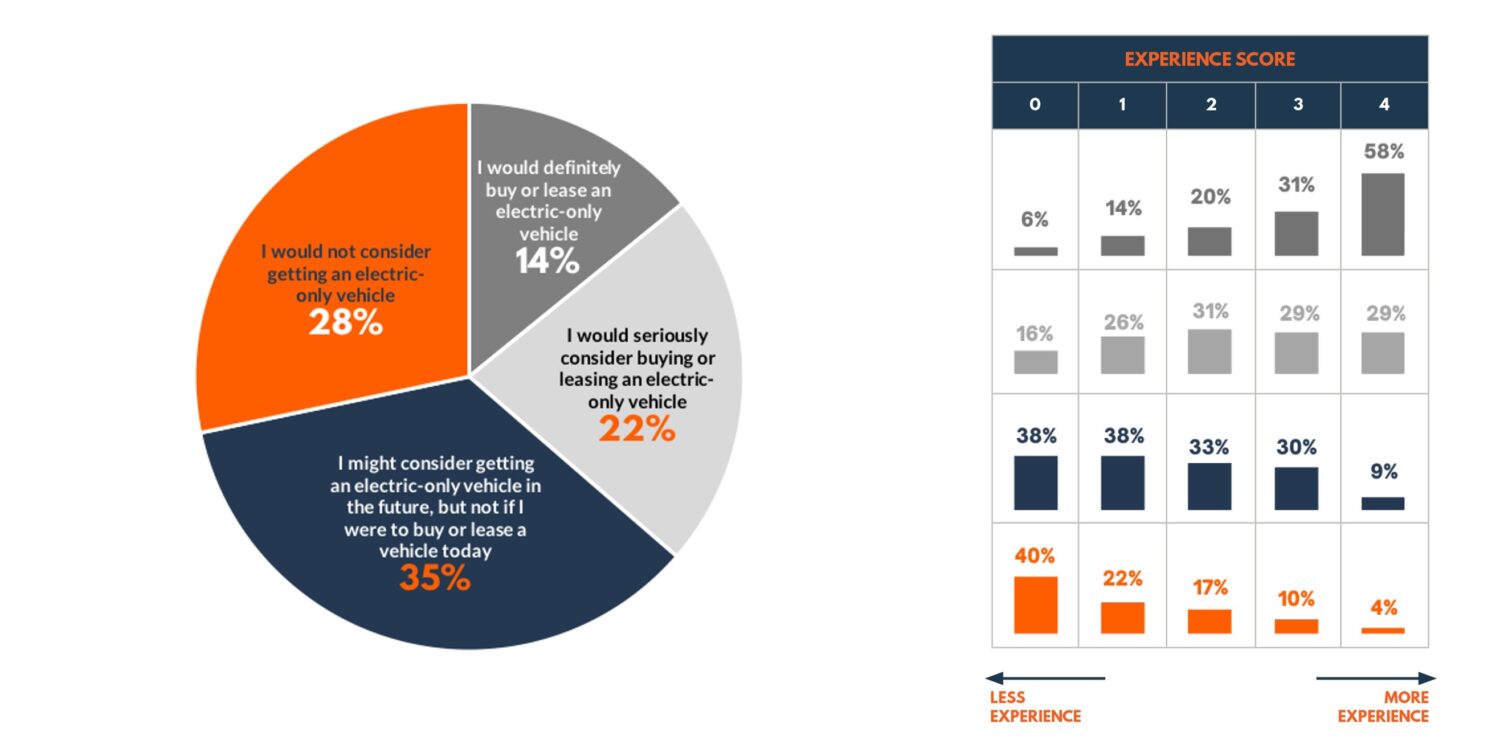Transportation is the largest source of global warming emissions in the United States, with passenger cars and trucks being the single largest contributor, so we know a swift transition to electric vehicles (EVs) is a critical part of addressing climate change. Improving access to cleaner transportation options for communities of color, including options other than privately owned vehicles, would help ensure that this transition happens first in the communities most directly impacted by the harms of the current transportation system.
Electrifying privately owned vehicles is a necessary part of achieving these broader goals—unfortunately, vehicles owned and operated in the communities of color disproportionately impacted by the status quo are being electrified at rates far less than white communities.
It is critical to ensure that the transition to a cleaner transportation system is just and equitable, and clearly we need smarter policies to get us there. Here at UCS we know that policy must be based on the best available data, so we worked with collaborators at Consumer Reports, EV Noire, and Green Latinos on a survey to ascertain what differences (if any) might exist between the perceptions and experiences of different communities to help better shape our policy recommendations.
The results of that survey and our policy recommendations are available in full here, but I’ve summarized a few of the key points below.
No shortage of desire for cleaner cars
First and foremost, it’s important to note that any disparity in adoption of EVs does not come from a lack of interest—Black, Latino, and Asian drivers are at least as interested in EVs as white drivers. While 33 percent of white respondents said they would definitely or seriously consider purchasing or leasing an electric vehicle, that figure rises to 38 percent for Black respondents, 43 percent for Latinos, and 52 percent for Asian Americans.

If it isn’t want that’s restricting consumer adoption, that means there are obstacles to EV ownership. By understanding what these are, we can then address these barriers with policy. To help close the gap in actual purchases.
Charging remains critical barrier
As has been found consistently across EV survey data, charging and range concerns remain a huge hurdle for purchasers, regardless of racial groups. While some of this concern may reflect myths or misunderstandings of available charging options, observed differences in living situation help to lead different communities to different charging prioritization.
For example, a larger share of white (49 percent) than either Black (44 percent) or Latino (42 percent) individuals say “the ability to charge where I live” is one of the charging options that would most encourage adoption. In contrast, a greater share of Latino (16 percent) than white (9 percent) respondents identified “access to workplace charging stations” as a charging option that would encourage the purchase or lease of an EV.
While this certainly reflects the systemic differences faced by communities of color through practices like redlining and housing covenants that led to racial discrimination in homeownership, it also illustrates the way in which the lived experiences of these communities are different, demanding tailored policy options that reflect their specific needs.
Public charging is critical, but community input about charging needs/preferences, including location, prevalence, and type of public charging infrastructure, is necessary in order to ensure the infrastructure is meeting the needs of the regions in which it is located.
Cost concerns not limited to purchase price
As one might expect, cost continues to represent another major hurdle reducing the likelihood of purchasing an EV as the next vehicle. However, purchase price was more of a concern for white and Asian respondents than for Black and Latino respondents. On the other hand, maintenance and repair costs were identified as an issue holding back Black and Latino respondents from purchasing or leasing an EV.
The disparity in concerns may reflect longstanding differences in vehicle ownership between the different groups. Black and Latino households are more likely to purchase used vehicles compared with white households, and while some of this is related to broader economic disparities, for Black consumers this holds true regardless of household income and could be partly due to longstanding discriminatory practices in automotive financing.
The fact that there is a difference in concern with regards to maintenance costs, in particular, despite evidence of significantly reduced maintenance costs for EVs, may also reflect differences in a critical factor for bolstering EV adoption: experience.

Experience shapes perspective on EVs
It has often been noted anecdotally the critical role played by EV owners in shaping public perceptions of EVs, and our data bears this out: the more familiar folks were with EVs, the more likely they were to buy them.
Unfortunately, lack of information is currently standing in the way for communities of color. Among those respondents who were not intent on purchasing an EV, a larger percentage of Black (13 percent) and Latino (10 percent) than white (5 percent) and Asian (2 percent) Americans said they don’t feel they know enough about electric-only vehicles to buy one.
This is of critical importance when considering policy interventions to increase EV ownership in communities of color. Community outreach and education must be responsive to the specific needs and concerns of Black and Latino customers. And ensuring that community leaders and trusted community partners have access to and experience with EVs will have further positive impacts on overall community awareness.
Targeted policies informed by data can accelerate the transition
By ensuring policies are responding to the available data, policymakers can help speed the transition to electric vehicles. We saw this with some of the changes to EV incentives made in the Inflation Reduction Act—a used vehicle incentive was created in the legislation, ensuring access to the greater share of the population that don’t buy new vehicles, and the incentive for new vehicles was modified to support more equitable access to those with lower tax liability (and, most often, lower incomes on average).
There is still more to be done. For example, communities of color continue to face a legacy of racist banking and financial practices that make it harder to get a loan, so strategies to improve affordability including loan guarantees or requiring low- or no-interest loans can be complementary to existing incentives. And investments in public charging must be designed not just around interstate travel but in consideration of the large number of households that live in multi-unit dwellings or rent their home and cannot simply install a charger in a garage.
Communities of color bear a disproportionate share of the health costs of our current, fossil-fuel based transportation system. A better understanding of the challenges for those communities, as our survey helps provide, is critical to making the necessary adjustments to policy to help accelerate electrification in these communities, which stand the most to gain from a more accessible, equitable, and sustainable transportation system.
EDITORIAL UPDATE, 9/8/22, 2:11PM: a previous version of this blog referenced a used vehicle rebate in the IRA, but was corrected to reference a used vehicle incentive.

